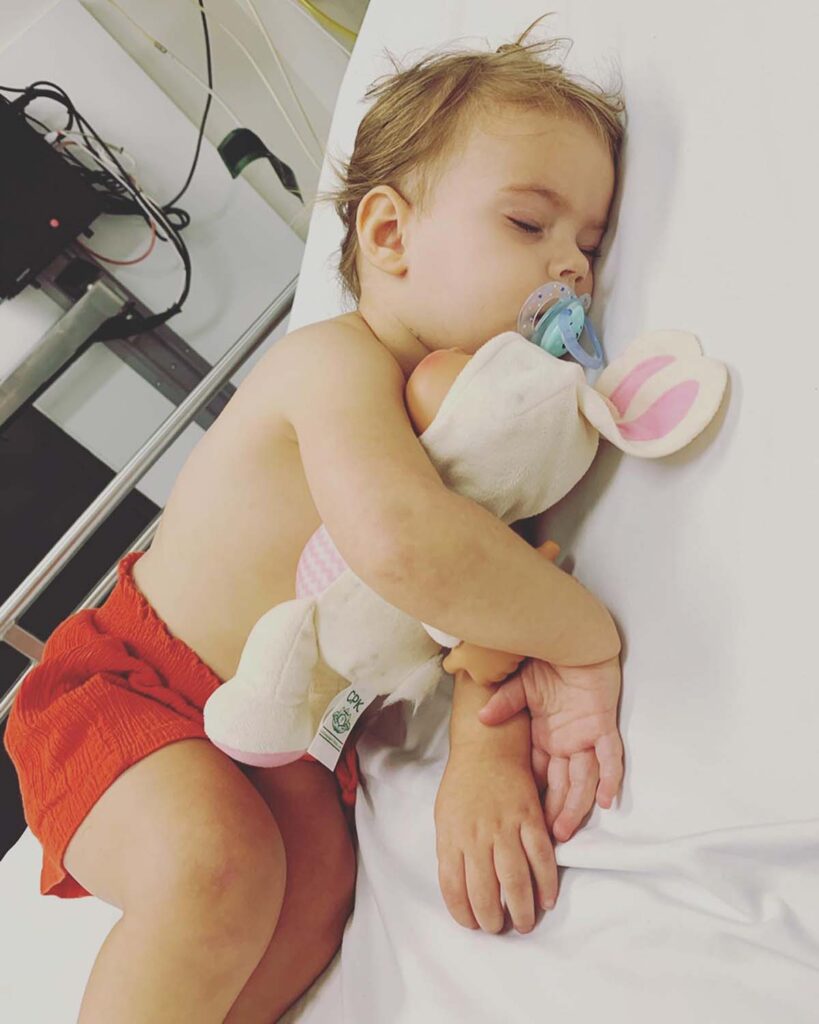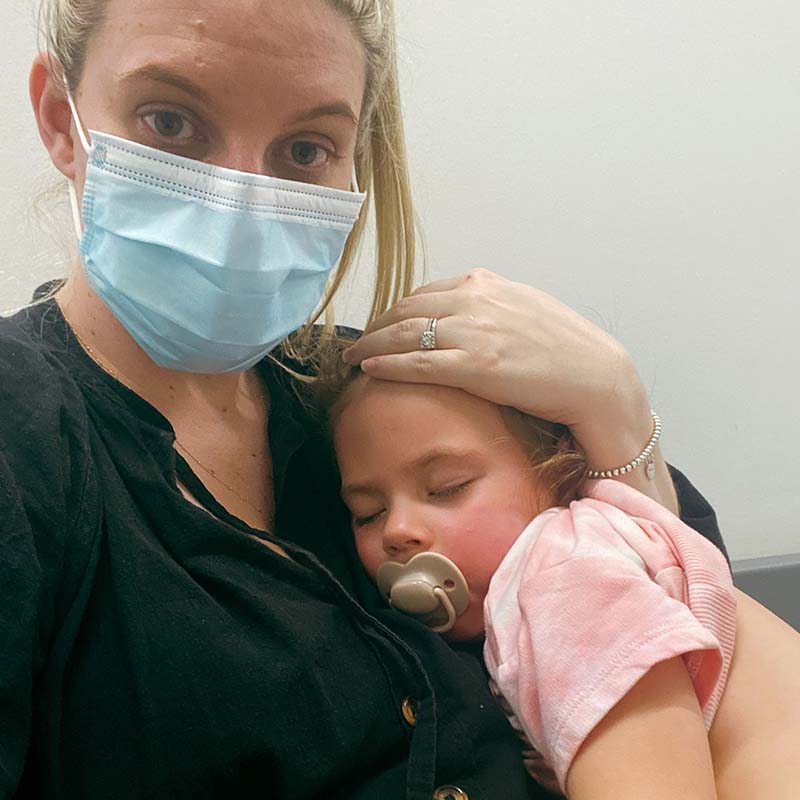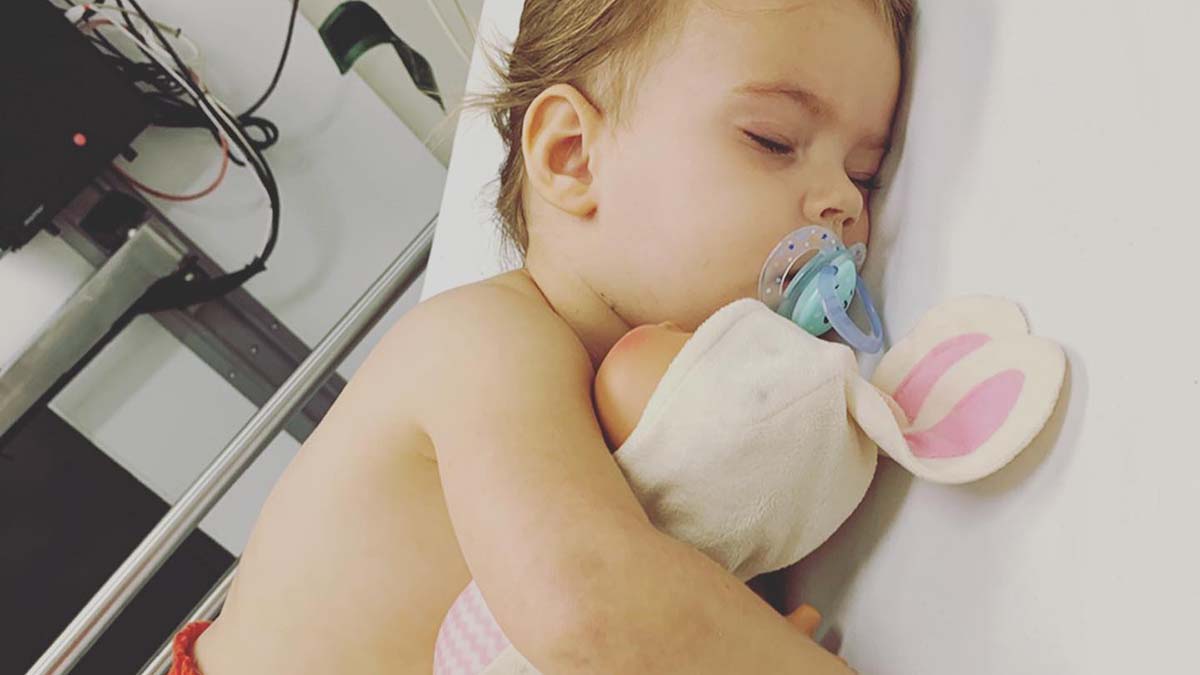I remember that night like it was yesterday. I remember the panic in my husband’s voice screaming, “She’s having a seizure!” I remember the sound of the brakes as we went from 100km/h to zero on the highway. I remember scrambling to rip off my seatbelt and get into the backseat while fumbling to call 000.
It was the night of my 29th birthday and we were driving home after a night out with friends. My one-year-old daughter Emmy was in her car seat when she started violently convulsing. Her arms and laps were outstretched, and her eyes rolled back—this had never happened before and the panic set in almost immediately.
My husband pulled over and we watched as the seizure subsided. But what replaced it was even more terrifying as it seemed she’d stopped breathing. Her little body went limp and she was unresponsive to our frantic calls.
My husband tried administering CPR but we didn’t know whether to move her and on the side of the highway, there was nowhere safe to lay her down. We felt helpless and scared.
I remember asking the emergency dispatcher, “Is she going to die? Is she going to have brain damage?”
Of course, they had no answers for me, but my heart and mind were racing with scenarios that I had never considered before in my life. After an excruciating 17 minutes an ambulance arrived, lights and sirens, and two very kind paramedics took charge.
They explained she’d likely had a febrile seizure due to a sudden fever, and it later turns out they were right. I recall they explained to me it’s sort of like your body needing a hard reset, the same way you might force a restart on a laptop. Her little body malfunctioned and performed its own hard reset. They were quite common, and she’d be okay.
The beginning of something worse

While I was relieved, what I didn’t realise was that that night would be the catalyst for my own mental health spiral. My anxiety went from bad to worse over the next 18 months as Emmy endured seven more seizures—at kindy, at her grandparents’ homes, in the bath.
I began to worry about things that had never even crossed my mind previously. I’d always considered myself quite a chilled mum—suddenly I was petrified of Emmy choking or sustaining a head injury. I withdrew socially and was constantly on edge. I was waking up at all hours of the night and checking her temperature in case she had another seizure, plagued by that feeling of helplessness I’d experienced on the side of the road.
While medication and therapy helped some, it wasn’t until I completed a first aid course (at the suggestion of a friend) that things started to turn around. My new-found knowledge and education helped me realise I didn’t have to feel like I couldn’t help my child in an emergency situation. It was practical, hands-on and allowed me to reflect on some of the emergency situations I’d found myself in and why things had played out the way they had.
It was the missing puzzle piece I needed to feel more competent and ease the fears that overwhelmed me. I knew what to do if Emmy started choking. I knew how to administer CPR and put someone in the recovery position. I knew what to do if Emmy had another seizure.
What are the first-aid skills every parent should know? Sarah Hunstead, founder of CPR Kids, explains below.
The inaugural First Aid Proficiency Report by Australia Wide First Aid was recently released and revealed the majority (80 per cent) of Australians agree that CPR is the most important first aid skill, yet nearly half (47 per cent) find it intimidating. It’s so clear that there’s a need for Aussies to feel more confident in an emergency and that so many Australians would benefit from a simple first aid course to help them feel more equipped.
According to Australia Wide First Aid, only 1 in 10 (10 per cent) Aussies have administered CPR on a child or a baby. Obviously, no-one ever wants to be in a position where they need to do so, but I can’t tell you how awful the feeling is when you don’t know what to do.
Less panic, more calm

My husband is generally an incredibly calm and level-headed person, but in that moment on the side of the highway, I remember the fear in his eyes and the panic in his voice. Emergency situations can cause even the most relaxed of us to crumble under pressure. But what makes those scenarios a little less daunting is basic first aid training. It would have given us a basic understanding of what was going on and what to do. Instead, we panicked.
What was an incredibly stressful two years does have a happy ending. Emmy’s in good health now and after working with an excellent paediatrician and ENT, we found out that alongside a number of deficiencies, Emmy had chronically inflamed tonsils and adenoids that made her constantly sick.
Every time Emmy would get sick, she’d get a fever which would bring on another seizure. She had her tonsils and adenoids removed when she was three years old and she’s not had another seizure since.
Since then, we’ve welcomed another daughter to our family and my anxiety is more under control than it’s been in years. I can’t believe something as simple as taking a first aid course could have the impact it did, but it’s truly allowed me to take back control of my life.
Read next: What to put in a family first-aid kit
Take this fun quiz to see if you have the knowledge and skills to save someone’s life.
How helpful was this article?
Click on a star to rate it!
5 / 5. 1
Be the first to rate this post!
Related posts
Subscribe
Receive personalised articles from experts and wellness inspiration weekly!

